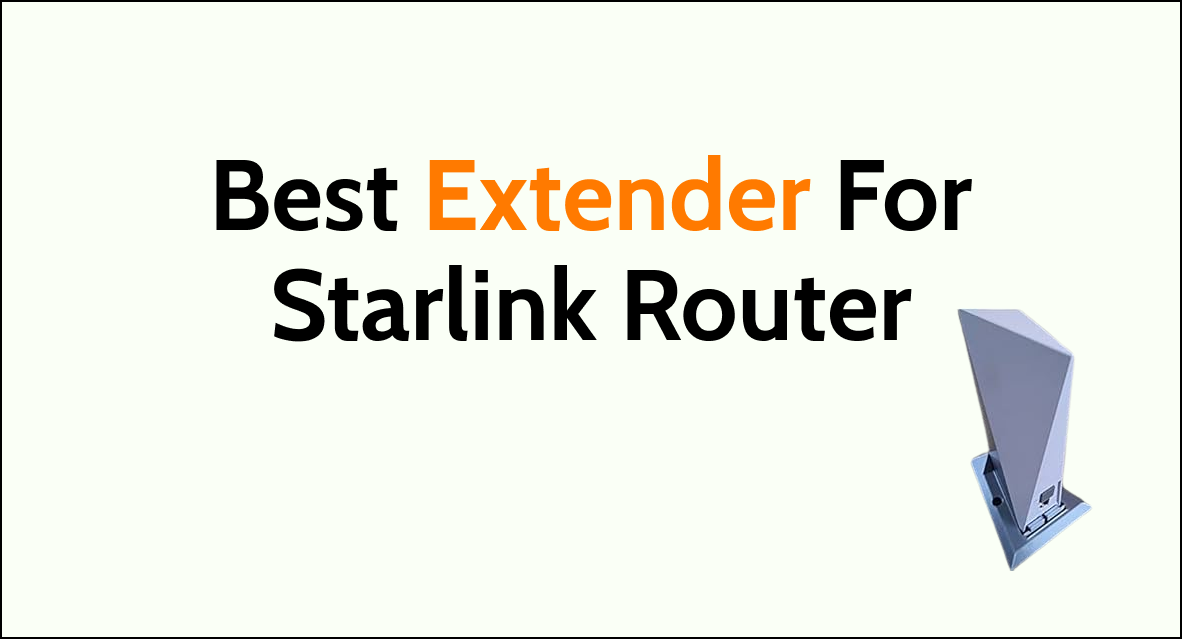If you’re one of the many people who have signed up for SpaceX’s Starlink internet service, you already know the benefits of having high-speed, reliable internet no matter where you live.
However, even with the advanced technology of the Starlink router, you may still encounter dead zones or weak signals in certain areas of your home or property. This is where a Wi-Fi extender comes in.
In this article, we will explore the best extender for the Starlink router, providing you with detailed information on the top options available on the market.
What are the best extenders for Starlink routers?
Based on our analysis of the available options, several WiFi extenders have been shown to be compatible with Starlink routers and effective at boosting internet connectivity.
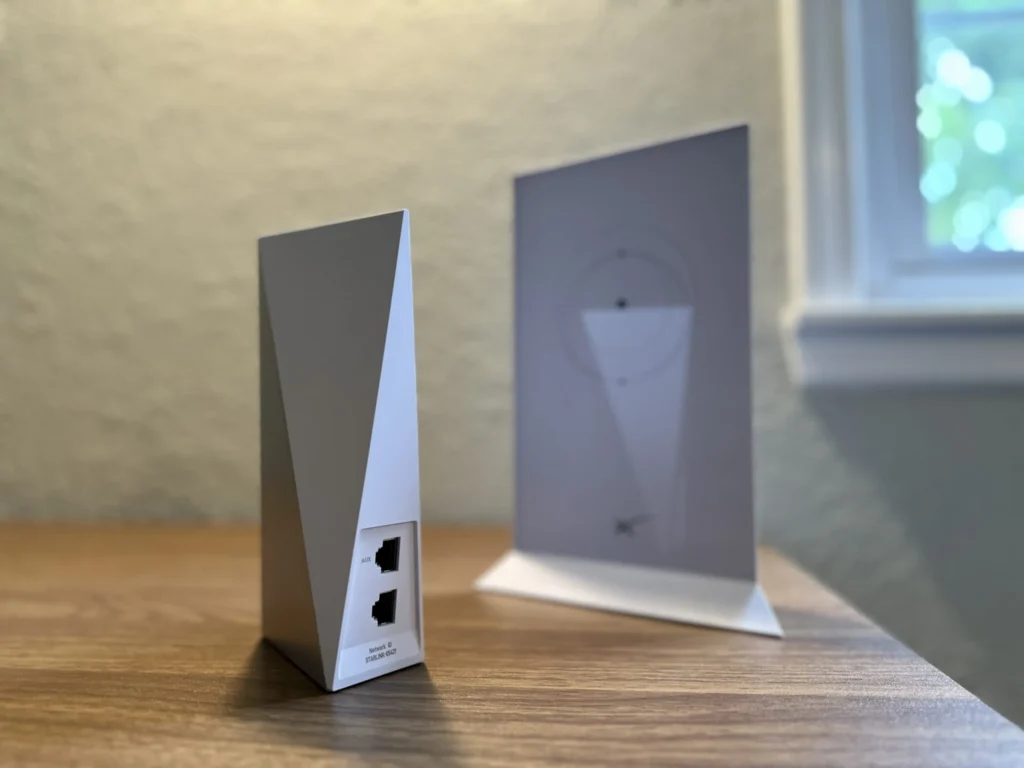
Some top-rated extenders to consider include:
1. TP-Link RE550
The TP-Link RE550 is often recommended as one of the best extenders that can be used with the Starlink router to improve coverage in large homes and even small businesses.
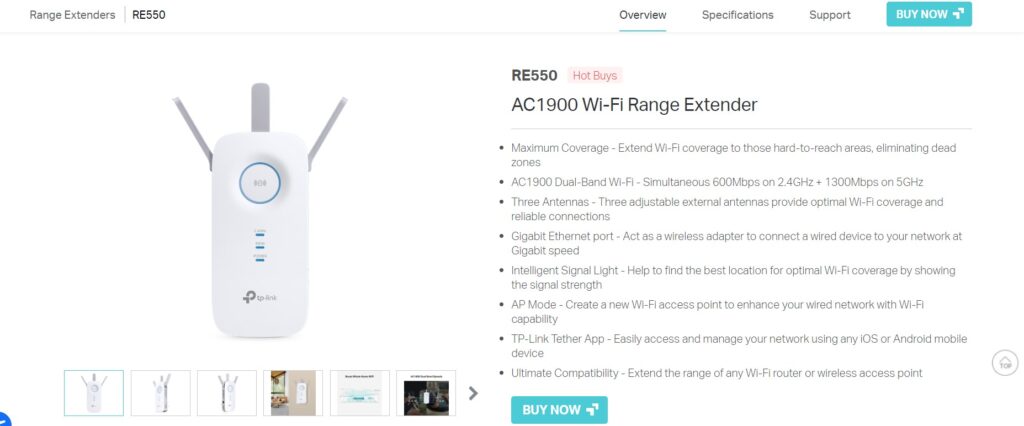
Some key highlights of RE550 include:
- Range – With its 3 external antennas, the RE550 is able to provide a strong, reliable WiFi signal over a wide area. Several users have reported the RE550 improving Starlink coverage in homes as large as 3,700 square feet. One user mentioned it added 5 full bars of signal to devices that were previously weak.
- Speed – Thanks to support for dual-band WiFi 5 with a maximum speed of 1900 Mbps, the RE550 has no issue keeping up with Starlink speeds. Its 3×3 MU-MIMO technology allows it to transmit data to multiple devices simultaneously without slowing anyone down. This is perfect for households with 25-30 connected devices streaming video or gaming online.
- Easy Setup – Setup of the RE550 is quite simple using the TP-Link Tether app or web browser interface. It supports the WPS push-button method for quick and painless configuration. The app allows you to check signal strength and bandwidth remotely as well.
- Value – At its affordable price point, the RE550 is a great value for boosting Starlink’s coverage throughout medium to large-sized homes. Its speed capabilities even make it suitable for small offices subscribing to Starlink’s 500 Mbps business plan.
2. TP-Link RE715X
The RE715X is one of the most powerful and future-proof extenders compatible with Starlink thanks to its support for the new WiFi 6 standard.
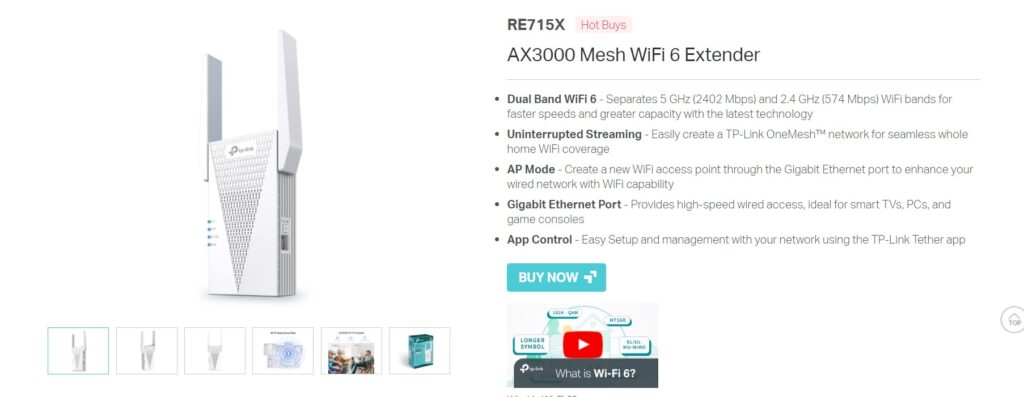
Some key advantages of TP-Link RE715X include:
- WiFi 6 Compatibility – As a WiFi 6 device, it can achieve speeds up to 3Gbps by using OFDMA and MU-MIMO technologies. This ensures it can keep up with even Starlink’s highest tiers.
- Massive Device Capacity – With 4 high-performance amplifiers and external antennas, the RE715X can broadcast strong and reliable signals to connect up to 50 devices simultaneously in a 1500 sq ft area.
- Future-Proof Bandwidth – Dual-band WiFi 6 allows it to aggregate both 5GHz and 2.4GHz signals. The 5GHz band provides speeds around 2400Mbps while 2.4GHz offers up to 574Mbps.
- Long Range Coverage – Reviews have found its 4 high-gain antennas can reliably reach hard-to-cover corners 1500 sq ft away from the Starlink router. This makes it a great choice for both large homes and small businesses.
- Easy Setup – TP-Link’s Tether app simplifies setup and allows you to monitor network activity like available bandwidth in real-time from your phone.
3. Netgear Nighthawk X6S
The Netgear Nighthawk X6S is one of the most powerful and future-proof extenders for Starlink thanks to its tri-band WiFi technology.
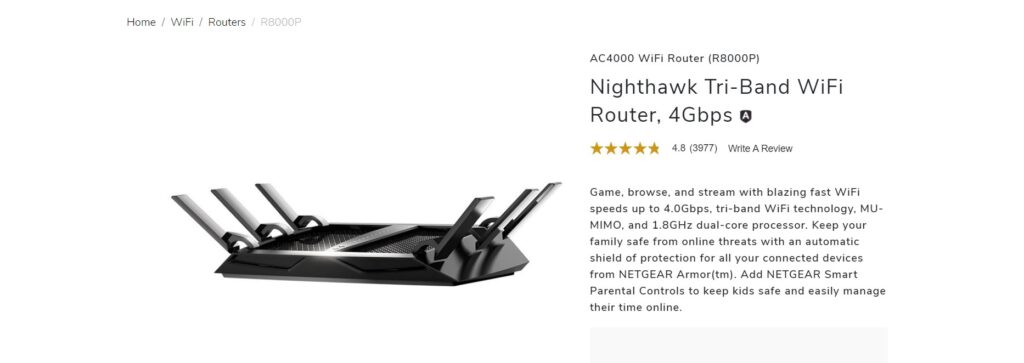
Some key advantages of the Netgear Nighthawk X6S include:
- Tri-Band WiFi – It utilizes a dedicated 2.4GHz band and two 5GHz bands to maximize speeds up to 2.53Gbps. This allows connecting multiple high-bandwidth devices without congestion.
- Seamless Starlink Integration – As a tri-band device, it can easily keep up with Starlink’s speeds to provide seamless coverage. This makes it suitable for supporting high-bandwidth activities for the Starlink Maritime plan.
- Large Coverage Area – Its high-powered antennas provide strong signals to cover multi-story homes and medium-sized businesses effectively.
- Sleek Design – Unlike bulky competitors, the X6S features a low-profile design that blends into homes unobtrusively.
- Easy Setup – Netgear’s intuitive mobile app simplifies setup and allows real-time monitoring of network activity on your phone.
- Future-Proof – With tri-band WiFi supporting multi-gigabit speeds, it ensures maximum performance even as Starlink tiers continue upgrading in the future.
4. Linksys RE7000
The Linksys RE7000 is an excellent choice for boosting Starlink’s coverage in large business settings or smart home applications due to its massive range and device capacity.
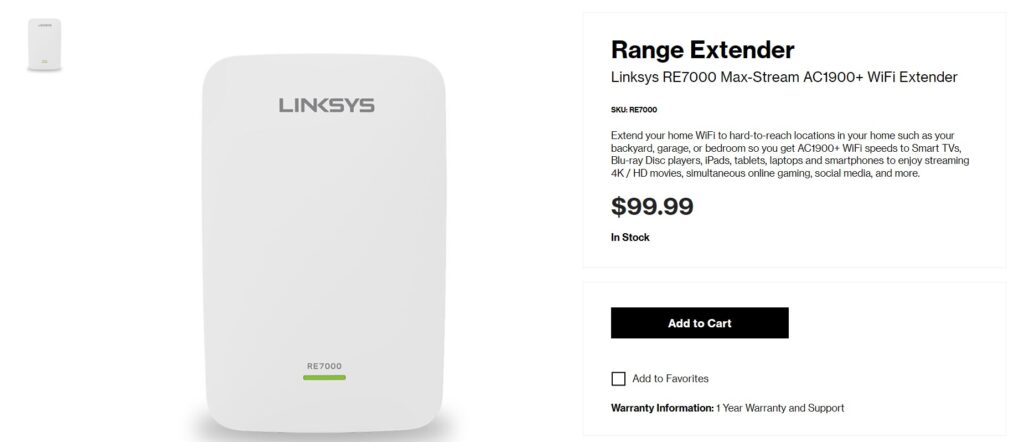
Some key advantages of the Linksys RE7000 include:
- Huge Coverage Area – With a range of up to 10,000 square feet according to the manufacturer, it can easily cover most small/medium businesses relying on Starlink.
- Gigabit Ethernet Port – The inclusion of a Gigabit Ethernet port allows connecting wired devices like smart home hubs, desktop PCs, and security cameras for reliable performance.
- Suitable for Starlink Business Plan – As it supports speeds up to 1.7Gbps, the RE7000 can keep up with Starlink’s business tiers for supporting multiple employees/devices simultaneously.
- Massive Device Capacity – MU-MIMO technology allows connecting up to 20 wireless devices at once within its wide range without slowdowns.
- Simple Setup – Linksys’ app makes setup simple by automatically selecting the best channel and enabling WPS pairing with compatible routers.
5. ASUS RP-AX56
The ASUS RP-AX56 is well-suited for gamers and smart homes relying on Starlink thanks to its strong coverage, dual-band connectivity and USB port.
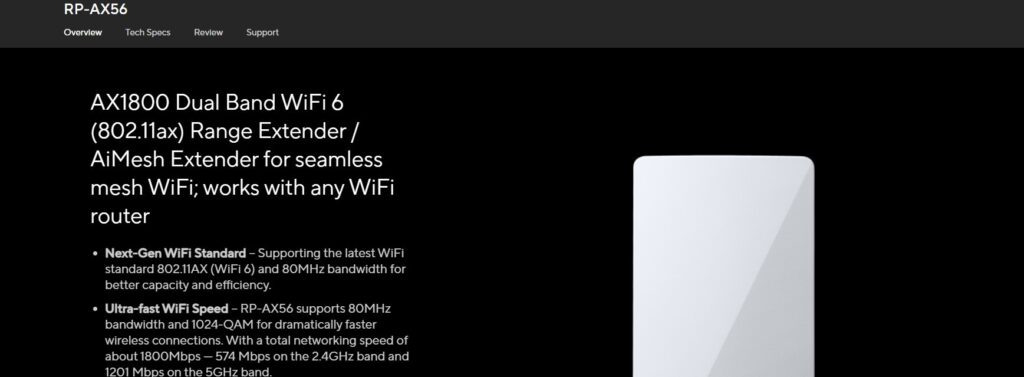
Some key advantages of the ASUS RP-AX56 include:
- Large Coverage for Gaming – With up to 3,000 sq ft of coverage according to ASUS, it ensures low-latency connections even in sprawling homes needed for online multiplayer gaming.
- Dual-Band Connectivity – Separate 2.4GHz and 5GHz bands prevent congestion, so gaming and streaming perform at their best when many devices are active.
- Many Connected Devices – MU-MIMO allows connecting up to 30 devices like game consoles, streaming devices and IoT hubs without performance drops.
- USB Port for Storage/Printing – The built-in USB 3.0 port enables the sharing of media, files and printers across the extended wireless network.
- Easy Setup – ASUS’ AiMesh compatibility provides a simple setup and management experience through the ASUS router’s control panel.
6. Tenda A33
The Tenda A33 is a great choice for extending Starlink’s coverage to outdoor areas thanks to its weatherproof design and ability to withstand wide temperature ranges.

Some key advantages of the Tenda A33 include:
- Large Outdoor Coverage – With a 1000 sq ft range, the A33 ensures strong WiFi for activities like backyard entertaining or remote working.
- Weatherproof Casing – Being fully weatherproof and able to withstand temperatures from -30°C to 70°C, it can be safely placed in any outdoor environment.
- Simple 2.4GHz Connectivity – While only offering 2.4GHz connectivity, its strong signal is suitable for outdoor IoT devices and basic outdoor use cases.
- Many Connected Devices – MU-MIMO allows connecting up to 20 devices like security cameras, smart lights and sensors without interference.
- Easy Setup – Tenda’s app simplifies setup by finding the optimal channel and enabling one-touch WPS pairing with a router.
7. Linksys RE6300
The Linksys RE6300 provides a cost-effective way to boost Starlink’s coverage for basic needs.

Some key advantages of the Tenda A33 include:
- Large Coverage Area – With a range of up to 6,500 sq ft, it can reliably cover most small homes and extend to backyard areas.
- Dual-Band Connectivity – Separate 2.4GHz and 5GHz bands prevent congestion and allow connecting a variety of wireless devices.
- Ethernet Port – The included Gigabit Ethernet port enables stable connectivity for devices like smart displays, cameras and game consoles that need wired connections.
- Simple Setup – Linksys’ mobile app simplifies installation by detecting your network and automatically selecting optimal settings.
- Budget Friendly – At an affordable price, it makes a good basic option for extending Starlink coverage without breaking the bank.
- Fewer Connected Devices – Supports up to 10 concurrent wireless connections, sufficient for typical households.
Here are the tabular comparison between different extenders:
| Model | TP-Link RE550 | TP-Link RE715X | Netgear Nighthawk X6S | Linksys RE7000 | ASUS RP-AX56 | Tenda A33 | Linksys RE6300 |
|---|---|---|---|---|---|---|---|
| Range | Wide coverage, 3,700 sq ft | 1,500 sq ft | Multi-story homes and medium-sized businesses | Up to 10,000 sq ft | Up to 3,000 sq ft | 1,000 sq ft | Up to 6,500 sq ft |
| Speed | Dual-band WiFi 5, 1900 Mbps | WiFi 6, up to 3Gbps | Tri-band WiFi, up to 2.53Gbps | Speeds up to 1.7Gbps | Dual-band connectivity | 2.4GHz connectivity | Dual-band connectivity |
| Device Capacity | Suitable for 25-30 connected devices | Connect up to 50 devices simultaneously | Supports multiple high-bandwidth devices | Connect up to 20 wireless devices | Connect up to 30 devices | Connect up to 20 devices | Supports up to 10 concurrent wireless connections |
| Future-Proof | – | Future-proof bandwidth | Tri-band WiFi, future-proof | – | – | – | – |
| Setup | Simple setup using TP-Link Tether app or web browser interface | Easy setup with TP-Link’s Tether app | Intuitive mobile app for setup and monitoring | App for simple setup and monitoring | ASUS’ AiMesh compatibility for easy setup | Tenda’s app for simplified setup | Linksys’ mobile app for easy installation |
